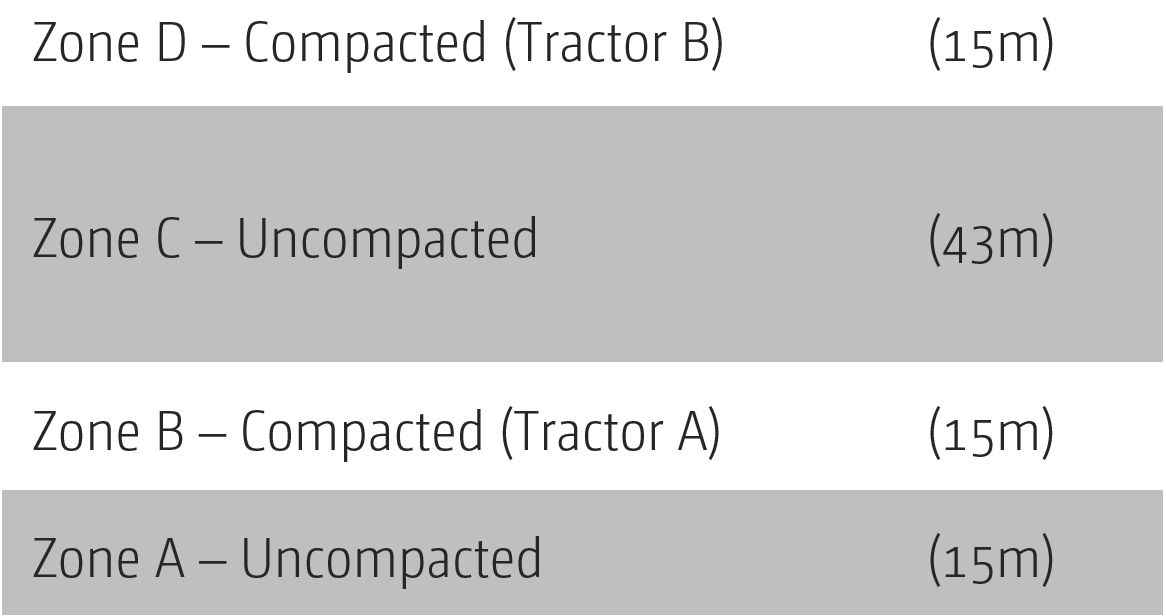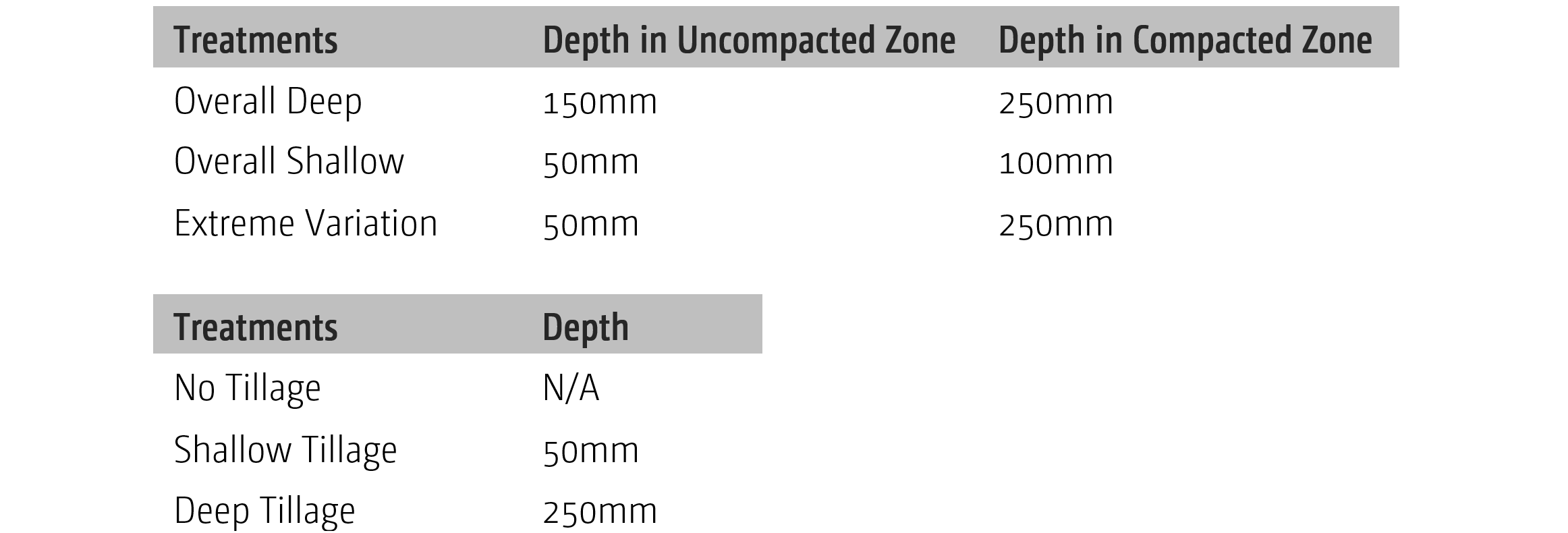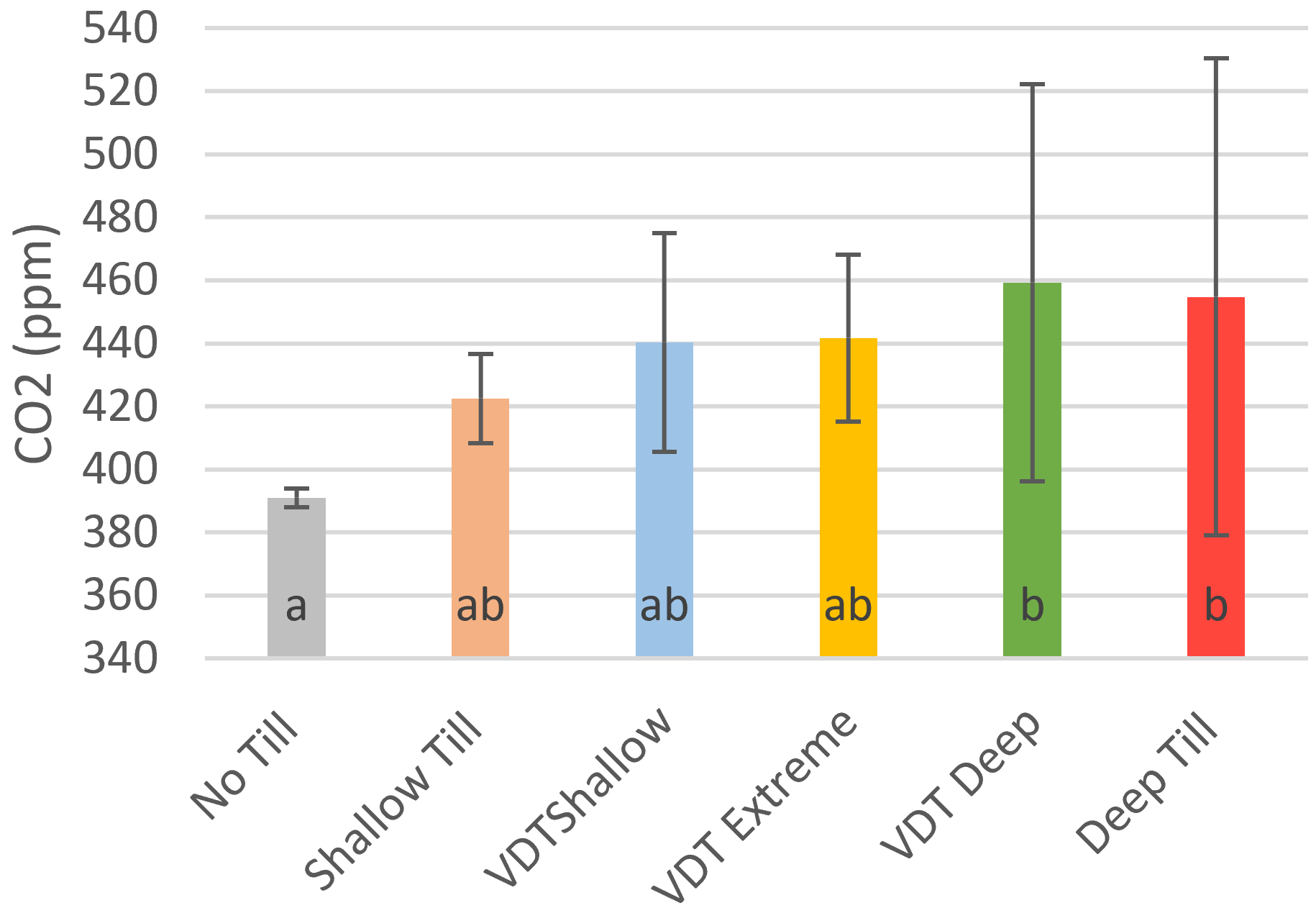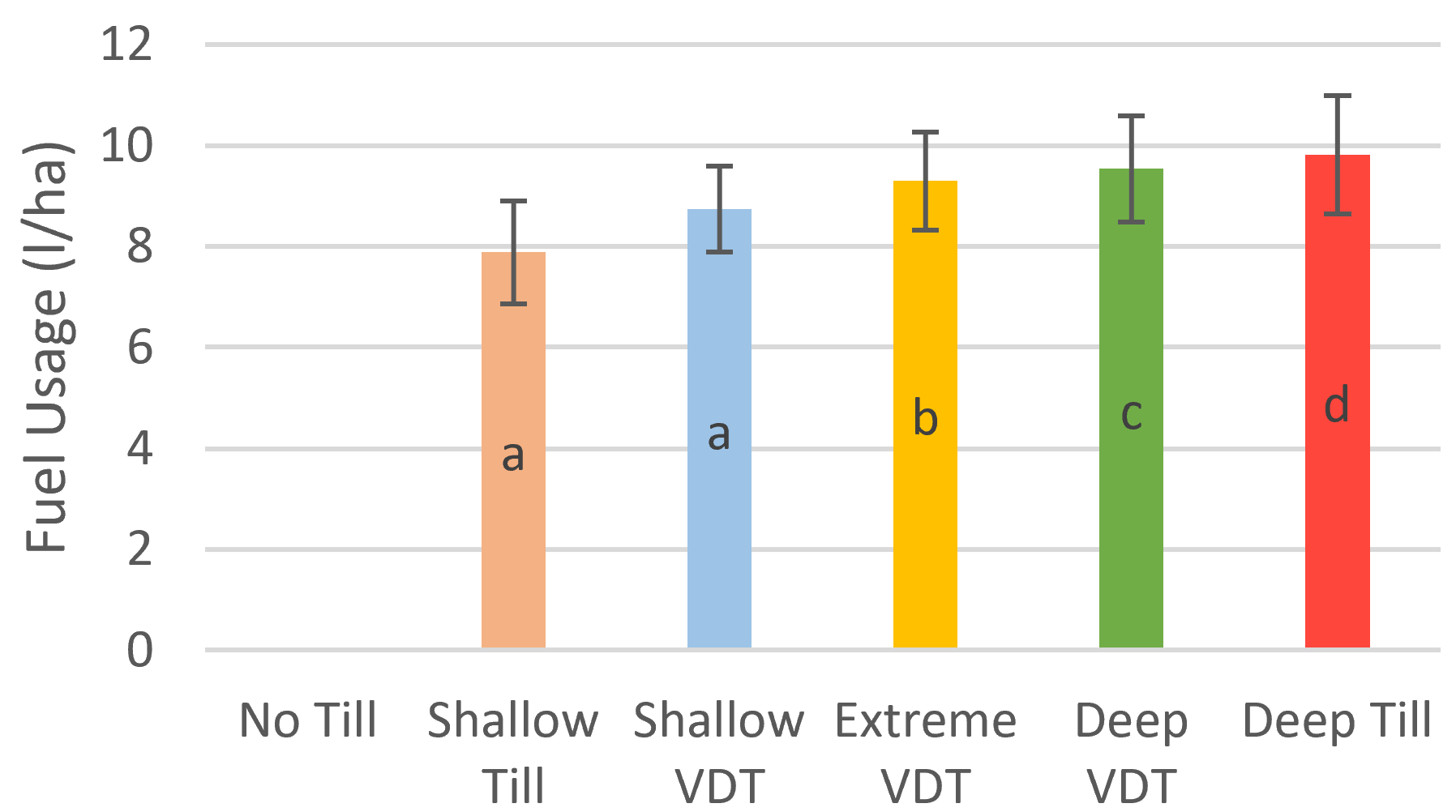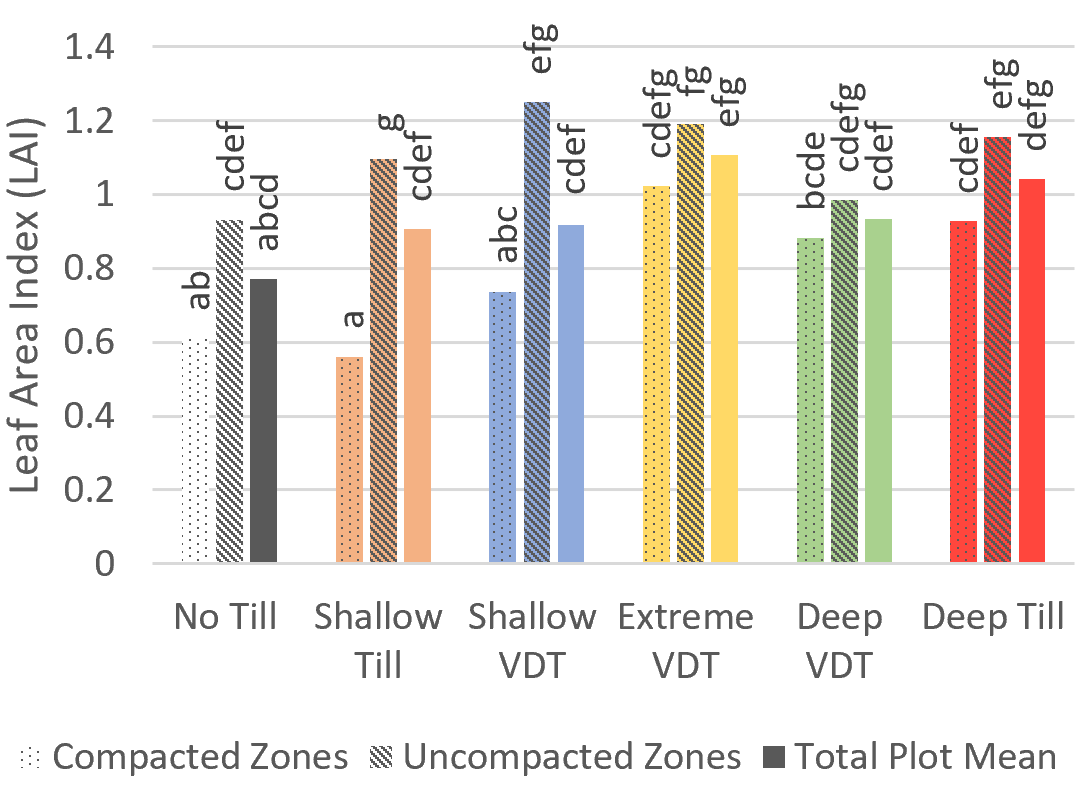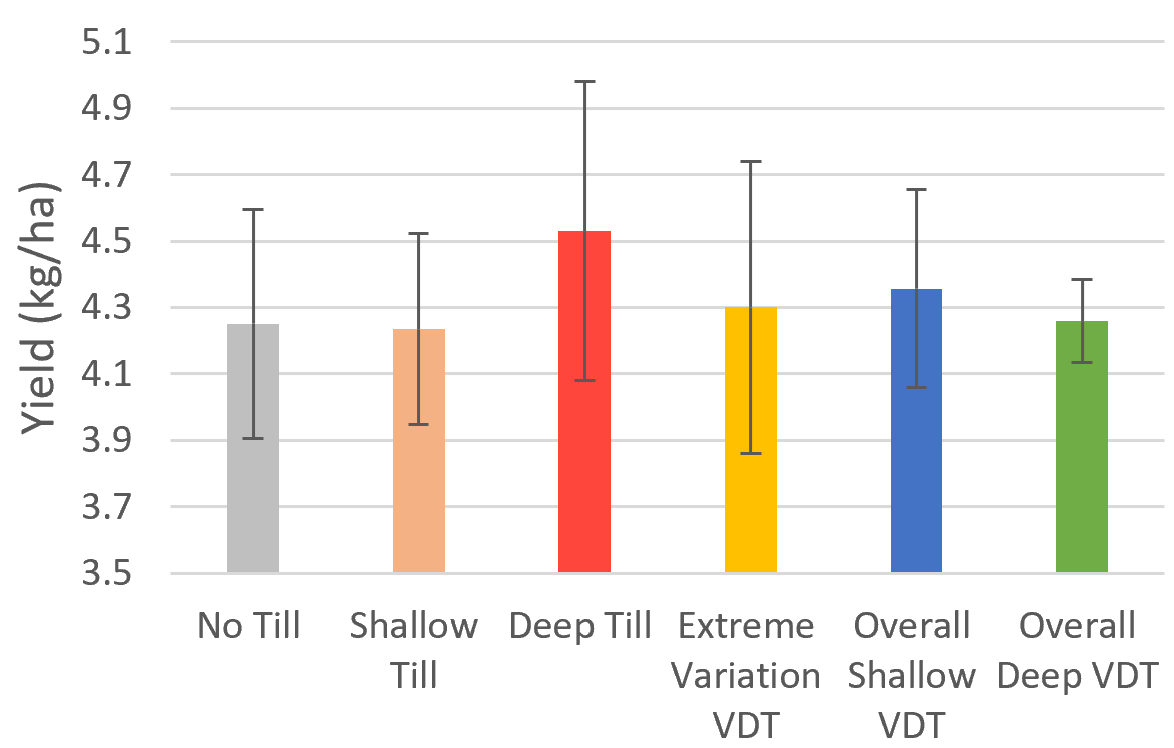24 Jan 2024
Variable Depth Tillage Experiment at Orchard Farm
Last Spring, we worked alongside Harper Adams student, David Thomson, to conduct a variable depth tillage experiment at Orchard Farm – Amazone’s UK training and research centre. The aim of the experiment was to determine the sustainability and commercial viability of this upcoming technology.
Variable Depth Tillage (VDT) is a new approach to cultivation whereby till depth is automatically adjusted, depending on field conditions such as soil texture, soil moisture content or soil compaction. This method has the potential to save fuel by reducing cultivation depth on areas of land with no compaction, where deep cultivation is not necessary. In areas of the field which encounter heavy traffic causing compaction, implement depth can then be increased again to remove deeper set compaction which can inhibit plant root growth or reduce water infiltration rate.
Amazone currently offers a similar system on the TwinTeC+ disk coulter, whereby coulter pressure can be varied based on soil texture maps, ensuring accurate and consistent seed depth placement in a variety of soil conditions.
The experiment
Using the Amazone 3m Cenius 3003 equipped with the 40mm C-Mix share allowed working depths of up to 30cm. The 88m x 90m experiment area was cultivated at maximum depth to alleviate any uneven compaction caused by the harvest of the previous maize crop.
The experimental area was then divided horizontally into four sections. Two sections were left uncompacted, while the other two were driven over with tractors to simulate the compaction typically found after harvest traffic (34% of the field area). Thirty 3-metre plots were then marked out, perpendicular to the direction of the applied compaction to ensure that each plot had its own uncompacted and compacted areas. The soil type was sandy loam.
Across the 30 plots there were 6 different treatments, repeated five times each. The treatments and depths were as follows:
Tractor fuel usage was measured during the cultivation process. Additionally, CO2 release from the soil was monitored using a container and CO2 meter.
The field was then drilled using an Amazone Cirrus drill, perpendicular to the direction of the cultivation to ensure all plots were treated equally. The barley was drilled on the 7th of March 2023 with Syngenta’s Laureate variety at 175kg/ha or 380 seeds per m2, at a depth of 4cm with 125mm row spacings.
The Results
CO2
CO2 released from the soil was found to be significantly different between no-till and deep-till as well as no-till and deep VDT, but errors were too great to be able to make any definitive conclusion from the other treatments. Although there are significant errors, as seen in the error bars, findings clearly show that soil co2 release increases in line with increased cultivation depth. To reduce errors in future experiments, a more accurate CO2 detector is required, in addition to an increased number of samples taken per plot.
Fuel Usage
Fuel usage during cultivation was as expected, with a clear increase in fuel demand as overall tillage depth increases. The stark difference in usage between no-till and the other cultivation methods clearly demonstrates the extent of saving that can be made when using no-till practises.
Unsurprisingly, shallow tillage used the least amount of fuel of the five cultivation methods, followed by shallow VDT. The fuel saving from deep tillage to shallow VDT was 83.4p per hectare, highlighting shallow VDT as an option which is both cost-effective and practical.
Leaf Area Index (LAI)
During plant growth, leaf area index (LAI) was measured as a suitable pre-harvest indicator of plant performance. Crop yield was later weighed (during harvest) to validate this. LAI was taken in each different zone within every plot, two months after drilling.
Findings displayed in the graph show that compacted zones have a lower LAI across all treatments, suggesting negative impact on plant growth from this direct cause. Shallow till suffered the largest difference of 0.56, closely followed by shallow VDT with a 0.51 difference (although shallow VDT had a higher average across the board).
In the compacted zones within the plots, shallow tillage was found to be significantly different to extreme VDT, deep VDT and deep till. This shows that in compacted areas these methods show promising results of increasing plant performance. Although on average over entire plots only a significant difference was found between no-till and extreme VDT. With further research and repetition, results may be more conclusive.
On the same day as LAI collection, an aerial photo of the field was captured using a drone. The compacted zone (below the top tramline) is easily identifiable due to crop thinning in that area. It is clear though that not all repeated treatments had a comparable crop response to compaction.
Yield
The error bars for yield were significant, and no significant differences were able to be drawn from these results. Nevertheless, it is clear that the average yield from deep till was the highest, with shallow till being the lowest. No-till and deep VDT were also lower yielding, only shortly following shallow till.
Key Findings
The study found a significant reduction in CO2 release in no-till (391 ppm) compared against deep till (455 ppm). This means that switching from a deep tillage practise to a no-till system could be an effective way to reduce a farm’s carbon impact.
Fuel usage was found to be lowest in the no-till treatment, as no fuel is required for this system. The saving was around 9 litres of fuel per hectare – if you’re cultivating 1000 acres, that’s 9000 litres of fuel you save by going no-till. However, no-till systems may not always be advisable due to farm soil conditions and best practices. Fuel savings from shallow VDT were up to 83.4p/ha which are still not insignificant on large scales but could still vary depending on a range of factors such as soil type.
Crop performance was significantly reduced in compacted zones in no-till and shallow till treatments additionally with shallow VDT having a significant reduction in LAI in compacted zones compared to its own uncompacted zones. This indicates these treatments may have reductions in final yield.
No-till suffered a significant reduction in plant counts (305 plants m-2) compared to deep till (347 plants m-2) in compacted areas as well as reduced LAI in all zones although final yield was not significantly different from other cultivation methods.
Conclusion
Combining these findings allows an assessment determining that shallow VDT has the potential for a recommendation as the most effective way to reduce fuel consumption and CO2 emissions whilst still maintaining crop performance in this study. Extreme VDT could also be recommended to farmers as LAI was higher than shallow VDT and fuel usage was less than deep till although more research is needed to see if it could be significant.
Further research and limitations
This experiment mainly focuses on sandier soils but shows greater promise of the technology on heavier (higher clay content) soils, further experimental studies over multiple years should be carried out to investigate the effectiveness of VDT on heavier soils.
More research should be carried out to discover the most efficient depth settings for VDT as well as the most productive tine widths and implement types (cultivator, disc harrow, subsoiler).
CO2 results were not significantly different across most of the treatments. To increase the statistical power an increased number of replicates should be used because of the varied nature of the results. Additionally, more accurate CO2 measuring equipment should be used because the AZ77535 CO2 meter had low accuracy of ±30ppm. Other research focusing on measuring soil carbon emissions used more sensitive equipment capable of measuring at ± 5 μmol mol-1.
The VDT experiment in action
Author
Email: [email protected]
